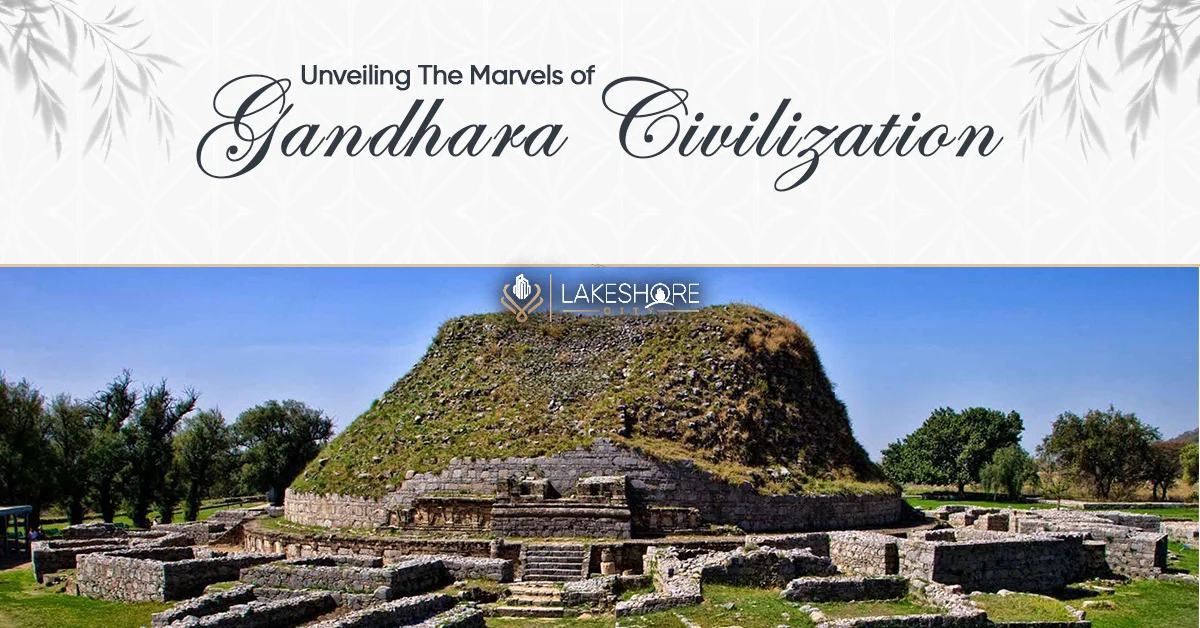From the sixth century BCE until the eleventh century CE, the Gandhara Civilization also called the Gandharan Civilization or the Gandharan Civilisation, existed in the territory of Gandhara, which included modern-day Afghanistan and Pakistan. Gandhara was a significant trade and cultural interchange hub along the Silk Road, serving as a melting pot of various cultures.
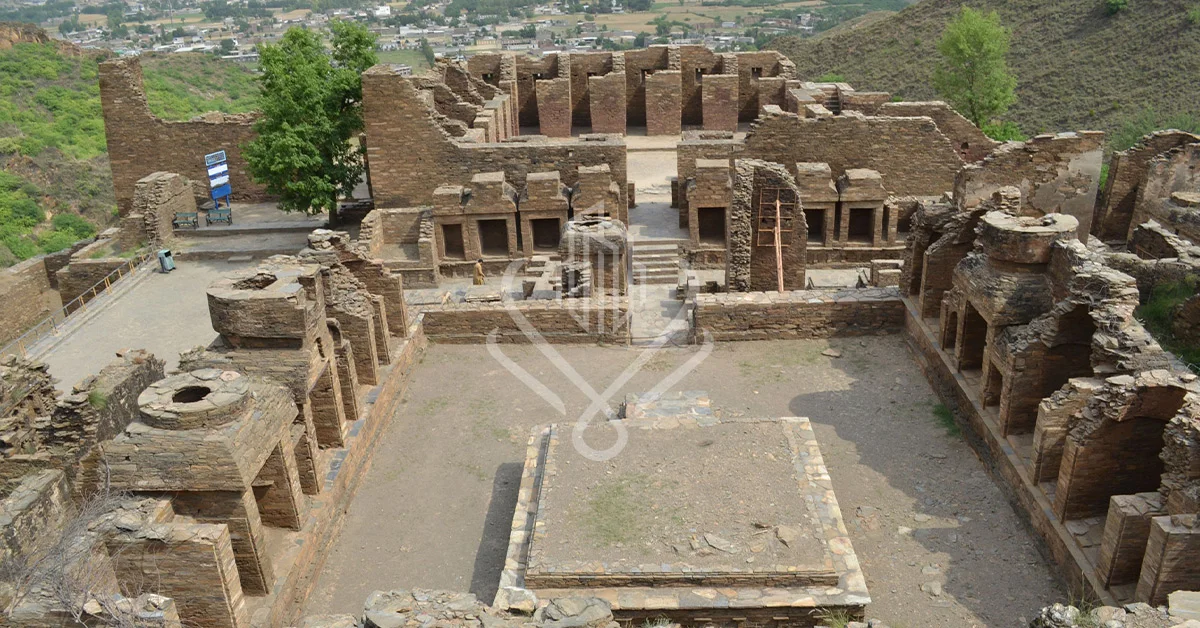
The Gandhara Civilization, influenced by Greek, Persian, Indian, and Central Asian civilizations, created a distinctive aesthetic and architectural style by fusing Hellenistic features with local customs. Buddhism was widely practiced in Gandhara, which developed into a center for scholarship, pilgrimage, and the creation of magnificent sculptures and reliefs. Despite its demise, the Gandhara Civilization left a lasting impression thanks to its creative creations and archaeological sites that provide insights into its fascinating past and rich cultural heritage.
Art and Architecture of Gandhara Civilization
The Gandhara Civilization’s artwork and buildings show a rare blending of local customs with Hellenistic and Buddhist influences. The extraordinary sculptures and reliefs created by the Gandhara School of Art, which originated in the first century CE, combined Indian sensibilities with Greek and Roman aesthetic elements.
Buddha, Bodhisattvas, and other Buddhist figures were frequently portrayed in Gandharan art, which primarily dealt with Buddhist topics.
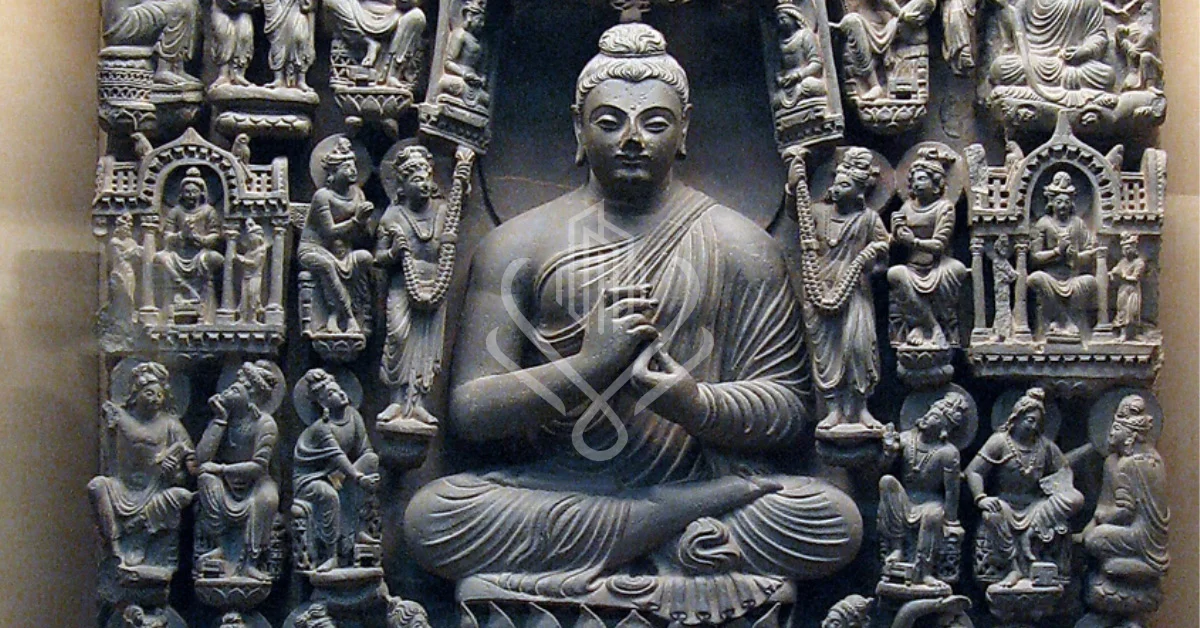
These paintings frequently portrayed serene, graceful individuals with pronounced Greek traits, such as wavy hair, intricately carved draperies, and a faithful depiction of the human form. The sculptures, which adorned monasteries, stupas, and other religious buildings, were typically constructed of grey schist or stucco.
Gandhara’s Location and Borders
The territory of Gandhara, which included swathes of the Potohar Plateau and Khyber Pakhtunkhwa Province, was in what is now Afghanistan and Pakistan. The Hindu Kush mountains in the north and the Indus River in the south surrounded it. The Kabul River in the West and the Chenab River in the East formed Gandhara’s western and eastern limits. This geographically diversified area, which offered a range of natural resources, comprised fertile valleys, lush plains, and rough hilly terrain.
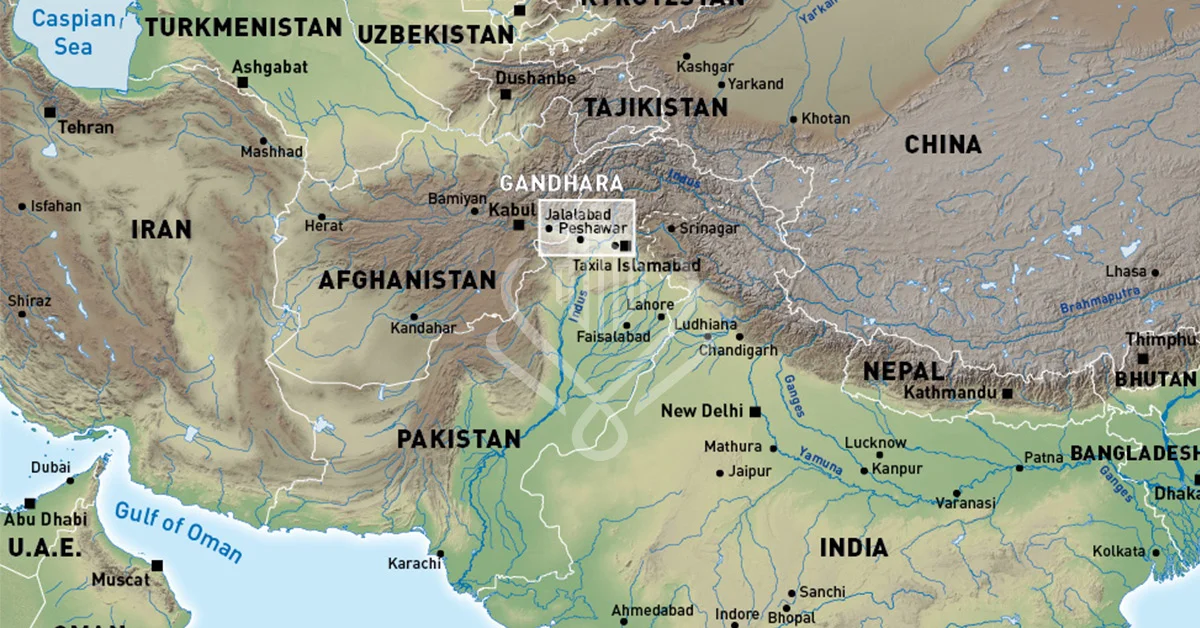
The Impact of Nearby Cultures
The cultures of the neighboring civilizations had a significant impact on the Gandhara Civilization. It was exposed to a wide range of cultural contacts due to its location at the intersection of Central Asia, the Indian subcontinent, and the Persian Empire. During their conquests in the 4th century BCE, the Greeks, led by Alexander the Great, profoundly influenced the area. Persian, Indian, and later Central Asian influences can be seen in Gandhara’s art, architecture, language, and religious customs. These various cultural influences mixed to form the Gandhara Civilization’s distinctive synthesis.
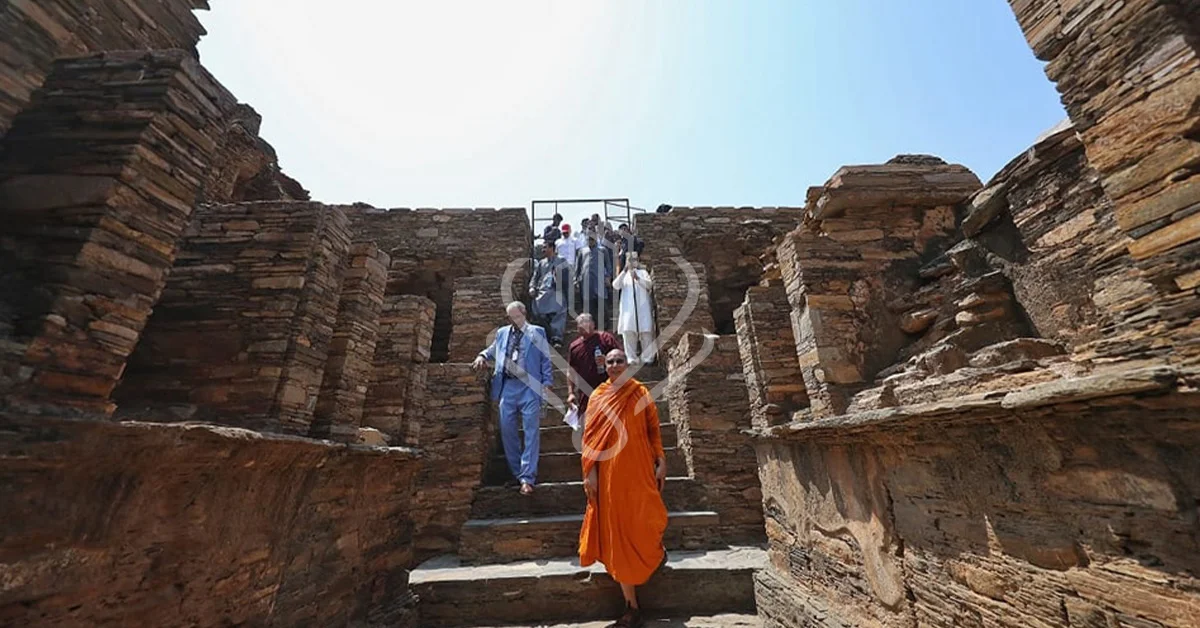
Intersections for Trade and Cultural Fusion
Due to its advantageous position, Gandhara was an essential hub for Trade and cultural interaction. Because of its location along the historic Silk Road, it developed into a center for the Trade of goods, concepts, and cultural customs between the East and the West. Due to the area’s proximity to many trade routes, goods, including spices, textiles, precious stones, and even sacred artifacts, were easily transported.
This thriving trading network attracted traders, intellectuals, and travelers from various places, adding to Gandhara’s cosmopolitan character. The cultural interaction there influenced the development of Gandhara’s distinctive aesthetic and architectural traditions and the propagation of religions like Buddhism.
Historical Development
The Gandhara region’s historical growth can be followed through several eras. The era before the Gandhara civilization emerged as a unique cultural and historical entity is known as the Pre-Gandhara Era. With its sophisticated urban centers and trading networks, the Indus Valley Civilization significantly impacted the area at this time. Aryans from Central Asia moved to the Gandhara region after the Indus Valley Civilization collapsed, establishing and contributing to the region’s social and cultural fabric.
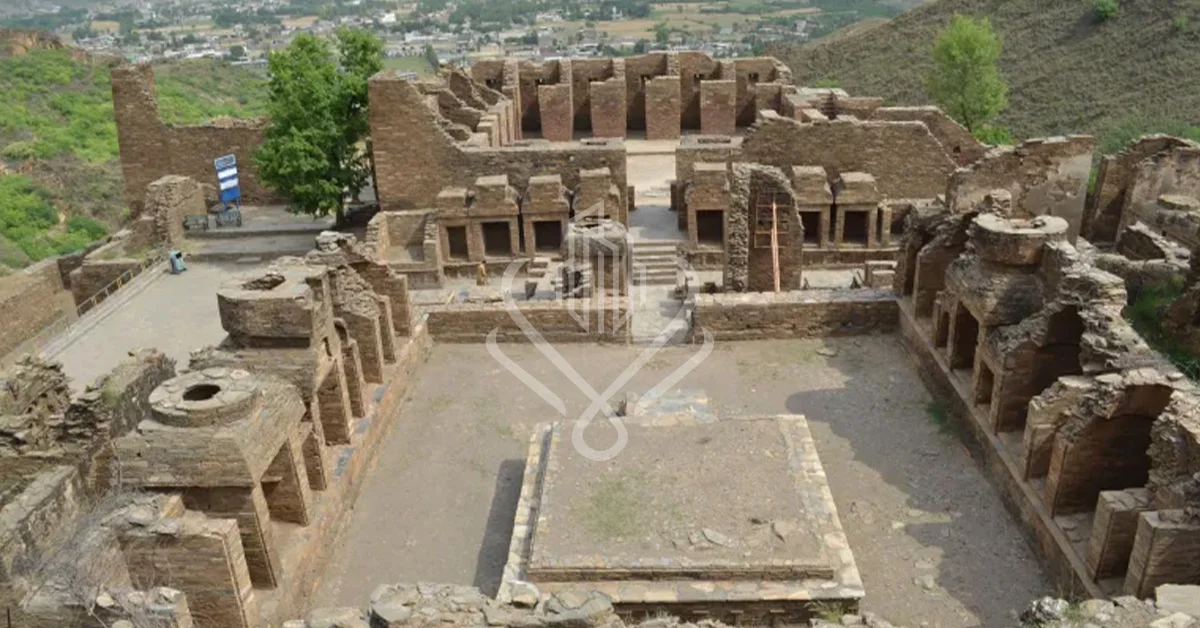
Influence of the Indus Valley Civilization
The Pre-Gandhara period was before the Gandhara region emerged as a unique cultural and historical entity. The Indus Valley Civilization, sometimes called the Harappan civilization, considerably impacted the area throughout this time. The Indus Valley Civilization spanned sections of modern-day Pakistan and northwest India between 3300 and 1300 BCE when it was at its height. The succeeding cultural and architectural advancements in the Gandhara region were significantly influenced by its advanced urban centers, sophisticated drainage systems, elaborate brickwork, and wide trade networks.
Aryan Migration and Early Settlements
After the Indus Valley Civilization’s collapse, about 1500 BCE, waves of Aryan migrants from Central Asia started to enter the Indian subcontinent. The Indo-European language and cultural group known as the Aryans progressively colonized the subcontinent, including the Gandhara region. The cultural and social fabric of the area was significantly shaped by these early Aryan settlers, setting the groundwork for subsequent advancements.
The interaction between the Indus Valley Civilization’s influence and the entrance of Aryan migrants during the Pre-Gandhara period laid the groundwork for later historical developments in the area, culminating in the Gandhara civilization’s emergence.
Early Gandhara Period (6th century BCE – 2nd century CE)
The Gandhara region’s historical growth can be followed through several eras. The era before the Gandhara civilization emerged as a unique cultural and historical entity is known as the Pre-Gandhara Era. With its sophisticated urban centers and trading networks, the Indus Valley Civilization significantly impacted the area at this time. Aryans from Central Asia moved to the Gandhara region after the Indus Valley Civilization collapsed, establishing and contributing to the region’s social and cultural fabric.
Founding and Early Rulers
During this time, Gandhara saw the emergence of several reigning dynasties. The Gandhara culture, with its native kings, emerged in the area. These early kings shaped Gandhara’s identity as a unique historical entity by laying the groundwork for its political and cultural growth.
Ashoka’s Influence and Buddhist Roots
The Mauryan monarch Ashoka had a significant influence throughout the Early Gandhara Period. In the third century BCE, Ashoka, who oversaw a sizable empire, embraced Buddhism and spread its teachings throughout his realms, which included Gandhara. His support of Buddhism and promotion of it had a significant influence on the area, promoting the expansion of Buddhist communities, monastic institutions, and Buddhist art and architecture.
Influence of the Mauryan and Greco-Bactrian Empires
Under Ashoka’s leadership, the Mauryan Empire expanded its influence over Gandhara and incorporated it into the marvelous imperial structure. The Mauryans influenced the political and governmental structures of Gandhara. Additionally, the Greco-Bactrian Kingdom, which had ties to the Hellenistic world, impacted the area throughout the second century BCE. The cultural and aesthetic preferences of the Greco-Bactrian kings had a lasting impression on the Gandhara region, resulting in the blending of Hellenistic and regional creative traditions.
Golden Age of Gandhara (2nd century CE – 5th century CE)
The region saw a tremendous period of cultural, artistic, and economic prosperity during the Golden Age of Gandhara, which lasted from the second century until the fifth century CE. With its capital in Peshawar, the Kushan Empire played a vital role throughout this time. Gandhara underwent a boom of artistic expression throughout the Kushan era, especially in Gandhara art.
Beautiful stone sculptures depicting Buddhist themes and deities were created using this distinctive art technique, which combined aspects of Indian and Hellenistic traditions. Due to the legacy of Alexander the Great’s conquests and the Greco-Bactrian links, Hellenistic art and Greek culture permeated Gandhara at this time.
Hellenistic techniques were incorporated due to the blending of Greek and indigenous creative traditions, creating realistic and naturalistic portrayals. Along with its artistic accomplishments, Gandhara prospered as a hub of commerce and urban growth. Due to its advantageous location along the old Silk Road, it established lucrative trade relationships with many other civilizations, which encouraged economic development and cultural interaction.
The Golden Age of Gandhara Provides
- Evidence of the area’s rich cultural legacy
- The fusion of various influences
- Its function as a thriving center of Trade and urban culture
Decline and Legacy
The fall and final transformation of Gandhara, once a thriving center of Buddhism, art, and culture, was accompanied by several serious difficulties. An important turning point in the area’s history was the invasions and onslaught of White Huns in the fifth and sixth centuries CE. These invasions, marked by waves of devastation and turmoil, affected Gandhara’s culture, economics, and cultural landscape, gradually causing its once-prominent Buddhist history to fade away.
This shift was hastened by the introduction and growth of Islam in the 7th century, which led to a collapse in Buddhism’s power in Gandhara. Gandhara had a significant change in religious beliefs and practices with the development of Islamization, which caused its Buddhist traditions to disappear.
Despite experiencing turbulent times, Gandhara’s legacy persisted due to its impact on neighboring areas. The surrounding lands bear the unmistakable imprint of Gandhara’s rich cultural and architectural legacy. Gandharan artistic motifs and styles traveled far beyond its borders, touching down in Southeast Asia, Central Asia, and the Indian subcontinent. Gandhara’s artistic and cultural expressions served as a link between other civilizations, promoting cross-cultural interactions and reciprocal influences.
Religion and Philosophy
As Buddhism spread from its cradle in Magadha, modern-day Bihar, India, Gandhara became a key center for the faith. Buddhism found rich ground in the Gandharan region as it spread beyond its original borders in the 5th century BCE, resulting in a thriving Buddhist culture. The evolution of Gandharan Buddhist art, a singular synthesis of Hellenistic, Persian, and Indian creative elements, was one of the most impressive results of this cultural interchange.
Elegant Buddha statues, detailed relief carvings, and exquisitely built stupas are just a few examples of the refined artistic style created by Gandharan artisans through the skilled fusion of classical elements with traditional Buddhist imagery.
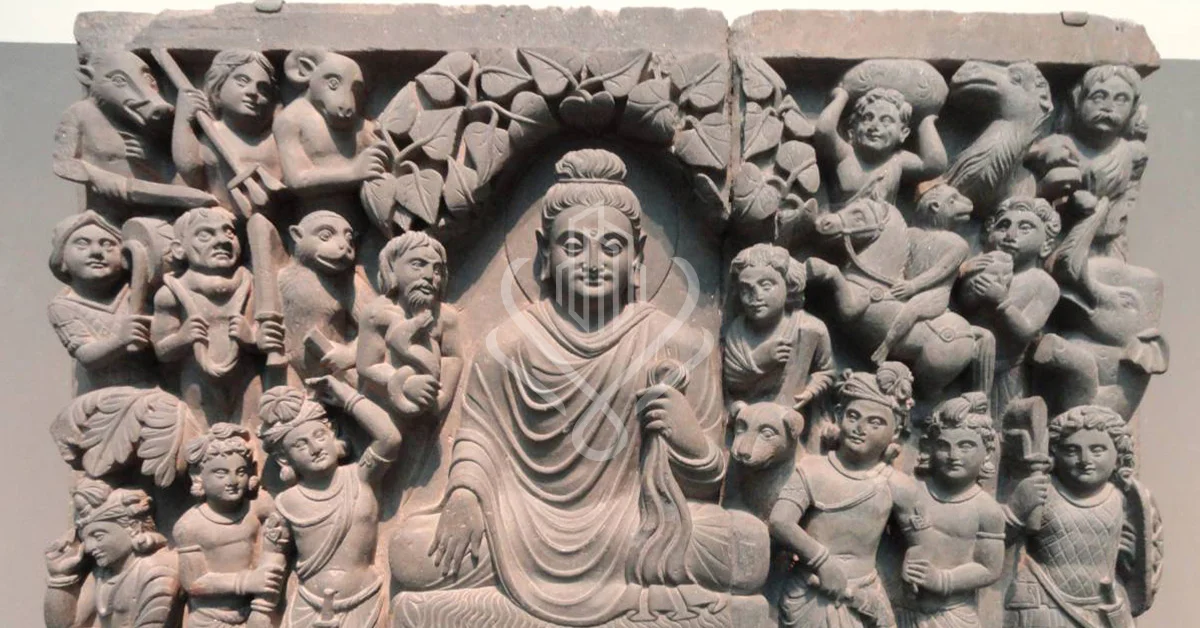
Additionally, Gandhara rose to prominence as a critical hub of Buddhist study, drawing scholars and monks from around the ancient world. Buddhism was studied and taught there extensively because of the area’s flourishing monastic establishments and educational institutions.
Distinguished academics and thinkers, like Nagarjuna, went to Gandhara to participate in philosophical discussions and increase their comprehension of Buddhist theory. This intellectual interchange was crucial in influencing the development of Buddhist thinking and greatly aided the spread of Buddhism throughout Asia.
Hinduism in Gandhara
Hinduism had a considerable impact on the ancient territory of Gandhara, with remnants of Vedic and Brahmanical traditions influencing the religious landscape. Vedic rituals and beliefs entered Gandhara as the hub for Indo-Aryan and Indus Valley civilization cultural interchange. The growth of Brahmanical influences in the area was made possible by blending indigenous practices and Vedic elements. As Hindu religious practices became more widely accepted, temples devoted to numerous deities were built.
These revered buildings served as places of prayer and gatherings of the spiritual kind, promoting a sense of belonging and piety among the people of Gandhara.
In Gandhara, where Hinduism and Buddhism coexisted, these two religions engaged in contacts and exchanges, creating a vibrant religious atmosphere. Over time, the creative legacy of Gandhara, which had first flourished under the influence of Buddhism, gradually absorbed elements of Hindu iconography and mythology, resulting in a harmonic fusion of artistic forms that served Hindu and Buddhist worshippers.
Art and Architecture
Gandharan Buddhist art is a fascinating example of the region’s artistic brilliance and intense devotion to Buddhism. The magnificent statues and sculptures of Buddha, Bodhisattvas, and other significant characters are central to this artistic heritage. These statues were expertly sculpted by Gandharan artists with fantastic attention to detail, giving them a sense of calm and spiritual depth.
Due to the area’s historical ties to the Hellenistic culture, one of the most remarkable features of Gandharan Buddhist art is its apparent influence on Greek and Roman creative forms. A distinctive Greco-Buddhist artistic hybrid was created by the fusion of Indian and Greek creative traditions; it is distinguished by realistic, naturalistic depictions of individuals dressed in flowing clothes and accessorized with elaborate jewelry.

The facial characteristics of the Buddha and Bodhisattvas frequently show the influence of Greek physiognomy, showing the cross-cultural interchange of ideas.
In addition to conveying complex symbolism and iconography, Gandharan Buddhist art gave their works more profound significance. Each posture, gesture, and accessory had a purpose, communicating distinct lessons and characteristics of the portrayed figures. For instance, the halo surrounding the Buddha’s head symbolized his enlightenment and heavenly aura, and the many mudras (hand motions) signified diverse facets of spiritual communication.
Architectural Marvels
The stupas and monasteries in Gandhara, in particular, were recognized as extraordinary architectural wonders displaying the area’s rich cultural and religious legacy. Stupas, respected dome-shaped buildings, served as enduring emblems of Gandharan architecture and frequently housed Buddha relics or revered Buddhist saints. These impressive structures functioned as sites of prayer, meditation, and pilgrimage, attracting followers from near and far. They were decorated with elaborate carvings and sculptures.
Gandharan architectural styles significantly impacted later architectural developments in many different areas well beyond its bounds. In Gandhara, Greek, Roman, and native Indian architectural elements were combined to create a unique and significant architectural combination. The later Buddhist architectural traditions in various regions of South and Central Asia were profoundly influenced by this Greco-Buddhist architectural style, distinguished by columns, friezes, and Corinthian capitals.
Language and Literature
The ancient Prakrit dialect, known as Gandhari, was vital in the Gandhara region and beyond. Its development can be attributed to linguistic exchanges between Indo-Aryan, Iranian, and native languages in the northwest Indian subcontinent in the first century BCE. These many cultural contacts impacted the linguistic features of Gandhari, making it a unique and distinctive language of its period.
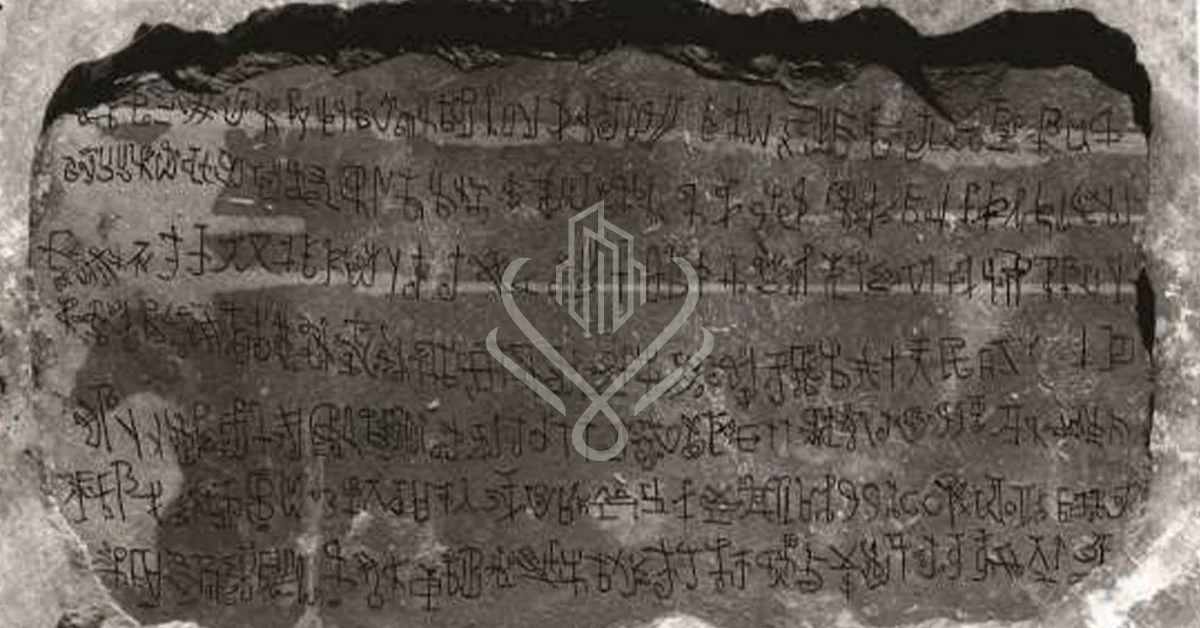
In the framework of Buddhist scriptures, Gandhari is given special significance. It is considered the primary language used when the earliest Buddhist writings were written. The region has discovered some of the earliest Buddhist manuscripts, including the renowned Gandhari Dharmapada, which has shed light on Buddhism’s language and doctrines. The region’s historical significance as a hub for Buddhist knowledge and scriptural preservation is further highlighted by the usage of Gandhari in Buddhist literature.
Even though the Gandhari language has been mostly lost to time, recent discoveries and ongoing research into old manuscripts have provided a window into this fascinating linguistic legacy. The Gandhari manuscripts’ fragments are still being analyzed by academics, revealing light on the language and cultural dynamics that once flourished in the former kingdom of Gandhara.
Our knowledge of the ancient past is further enriched by studying the Gandhari language and its function in Buddhist texts, which helps us better grasp the vibrant intellectual and literary traditions that once predominated in this extraordinary region.
Gandhara in Literature
Many ancient works and epics have referred to Gandhara’s storied past and compelling cultural setting, confirming its relevance in the literary traditions of antiquity. Gandhara is referenced in works like the Rigveda, which is mentioned as a remote land on the western frontier. The Mahabharata, one of India’s epic stories, also references the region’s rich heritage and plays a part in the heroic legends of its people. Gandhara was mentioned in historical texts and travelogues written by ancient explorers and pilgrims due to its advantageous location on the ancient Silk Road.
Gandhara was visited by tourists and intellectuals worldwide, including China, Greece, and Persia, who left behind vivid tales of their experiences there. These travelogues opened a glimpse into the flourishing civilization that once predominated in Gandhara and offered priceless insights into the locals’ cultural, social, and religious lives there.
Gandhara Social Class Structure
Gandhara’s society was set up in a way that reflected the predominating customs and beliefs of the time. The Brahmins (priests and academics) held the highest position in the social system, which was divided into different classes or varnas, with the Kshatriyas (warriors and rulers), Vaishyas (merchants and traders), and Shudras (artisans and laborers) occupying the successive four positions.
In addition to these four primary groups, the society featured those who did not belong to the varna system, often known as the “Dalits” or “Untouchables.” People were expected to carry out their jobs and responsibilities following their designated class because social standing was mainly inherited. Despite the varna system’s influence, the advent of Buddhism in Gandhara also offered a different route for social mobility, placing more value on morality and spiritual growth than the varna system did.
Education and Learning
Gandhara developed into a center for intellectual activity, education, and learning during its heyday. Buddhist monasteries, or viharas, played a crucial role in conserving knowledge and delivering education. Buddhist monks, academics, and sages discussed philosophy, studied the Bible, and passed on their knowledge. These educational institutions drew students from near and far, encouraging a spirit of scholarly inquiry and cross-cultural interaction.
The region’s reputation as a cradle of wisdom and learning was influenced by Gandhara’s highly respected attitude towards pursuing knowledge, both religious and secular.
Customs, Traditions, and Festivals
Gandhara’s numerous customs, traditions, and festivals were woven into the region’s rich cultural fabric to honor its spiritual and social heritage. Buddhist rituals and practices were deeply ingrained in people’s daily lives, with festivals like Vesak honoring the birth, enlightenment, and demise of the Buddha drawing sizable crowds of followers. Hindu customs and rites were also followed, demonstrating the fusion of cultures characteristic of Gandhara.
The region’s festivals, which were times of social peace and joyful festivity, were infused with the time’s art, music, and dancing. A thriving and peaceful community that flourished on spiritual awe and cultural appreciation was developed in Gandhara due to cultural interactions with nearby regions, contributing additional layers of richness to its customs and traditions.
Excavations and Discoveries
Numerous noteworthy sites have been discovered in Gandhara due to the region’s extensive archaeological past, offering a window into the area’s dynamic past. A few of the most well-known sites include Taxila, Takht-i-Bahi, and Butkara Stupa, each displaying unique architectural designs and creative expressions. Scholars from numerous ancient civilizations traveled to Taxila, a renowned center of learning and a UNESCO World Heritage Site.
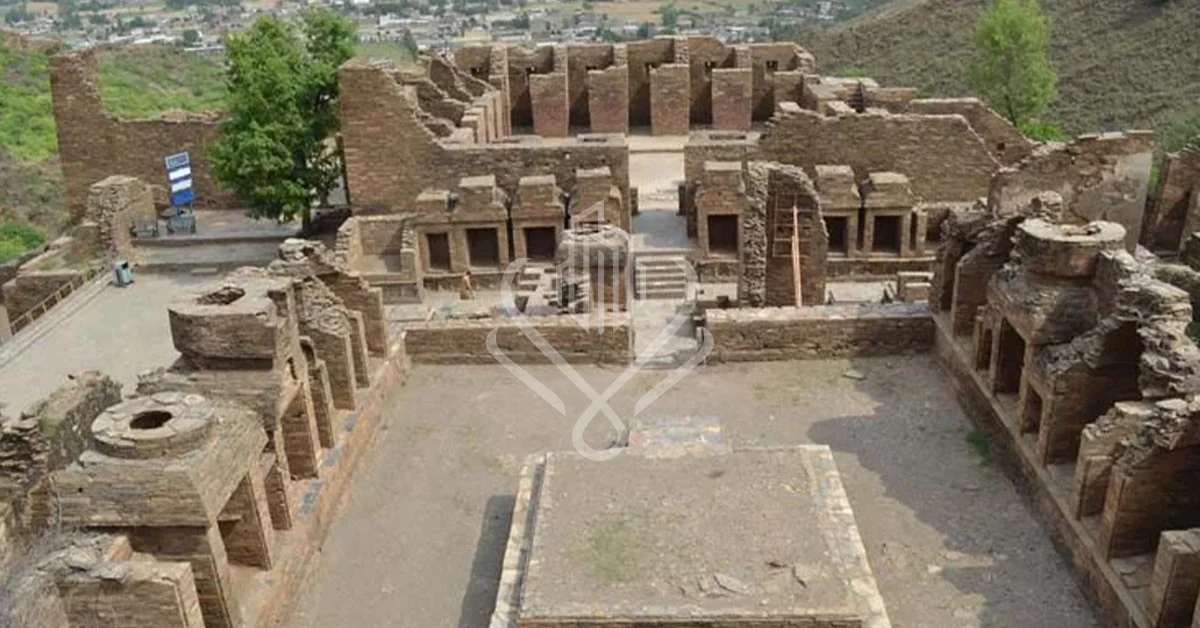
The magnificent Takht-i-Bahi, or “Throne of Origins,” monastic complex is positioned atop a hill and reflects the ascetic lifestyle of Buddhist monks. The Butkara Stupa, a majestic building covered in delicate carvings, is the pinnacle of Gandharan Buddhist art.
Important Finds
Archaeological digs in Gandhara have uncovered a wealth of essential finds and artifacts illuminating the region’s cultural and historical significance. The magnificent Buddha statues, Bodhisattvas, and other religious figures that show the cross-cultural influences that influenced the region’s art are prominent among these Gandharan Buddhist sculptures.

We now have a more profound knowledge of early Buddhist texts and scriptures because of the discovery of antiquated manuscripts written in the Gandhari language. The discovery of coins, ceramics, and trade artifacts has also supplied significant proof of Gandhara’s economic activities and function as a bustling trade hub along the Silk Road.
Conclusion
Finally, the wonders of the Gandhara civilization have permanently etched themselves into the pages of history. Gandhara witnesses an ancient civilization’s artistic, philosophical, and intellectual accomplishments. Its exquisite Buddhist architecture and art, which reflect the blending of civilizations, and its rich literary heritage, preserved in antiquity manuscripts, are examples of this.
The excavations and discoveries in Gandhara never cease to fascinate and inspire, providing priceless insights into its inhabitants’ customs, civilization, and way of life.
As we uncover the treasures of Gandhara, we are reminded of its immense influences on the history we comprehend and the fabric of human society. The treasures of Gandhara still ring true, beckoning us to investigate and appreciate the essence of an ancient past that fascinates and enriches our contemporary world.
FAQs
Q1. What is the significance of the Gandhara Civilization?
Ans. The significance of the Gandhara Civilization lies in its pivotal role as a cultural crossroads, fostering the exchange of ideas, art, and religion between the Hellenistic, Indian, and Persian worlds. It also left an enduring legacy through its unique Gandharan art and architecture, influencing the development of Buddhist art and culture in the ancient world.
Q2. How did Buddhism flourish in Gandhara?
Ans. Buddhism flourished in Gandhara due to its strategic location on the ancient Silk Road, facilitating cultural exchange with various civilizations. The region’s role as a center for Buddhist learning and the development of Gandharan Buddhist art further contributed to its growth.
Q3. What are the key features of Gandharan art?
Ans. Gandharan art is characterized by a unique blend of Greco-Roman and Indian artistic styles, seen in realistic and naturalistic Buddha statues, intricate relief carvings, and the use of symbolism and iconography.
Q4. What caused the decline of the Gandhara Civilization?
Ans. The decline of the Gandhara Civilization can be attributed to factors such as White Hun invasions, the spread of Islam and the decline of Buddhism, and shifts in trade routes, leading to a gradual weakening of its socio-political and economic foundations.
Q5. Are there any surviving Gandhara artifacts today?
Ans. Many Gandhara artifacts have survived and can be found in museums and private collections worldwide. Notable examples include Gandharan sculptures, Buddhist manuscripts, coins, pottery, and architectural remains from various archaeological sites.
Our Featured Article:
Read More: Gandhara History | Library of Congress Reveals Ancient Scroll
Read More: Million of Buddhist Tourists Desire to Explore Gandhara Heritage
Don’t miss the chance to invest with Lakeshore! Secure your investment today by investing your financial investment with Lakeshore in the following available options like Lakeshore City, Lakeshore Club, and Lakeshore Farms.
For More updates, please Contact +92 335 7775253 or visit our website https://lakeshorecity.com/
Lakeshore City is the upcoming elite lifestyle at Khanpur Dam. Offering no parallel amenities for the members and owners of distinguished farmhouses.
Become Part of Luxurious Lifestyle
Contact: 0335 7775253


